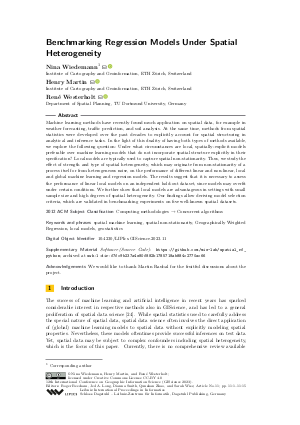LIPIcs.GIScience.2023.11.pdf
- Filesize: 1.86 MB
- 15 pages

 Creative Commons Attribution 4.0 International license
Creative Commons Attribution 4.0 International license

Machine learning methods have recently found much application on spatial data, for example in weather forecasting, traffic prediction, and soil analysis. At the same time, methods from spatial statistics were developed over the past decades to explicitly account for spatial structuring in analytical and inference tasks. In the light of this duality of having both types of methods available, we explore the following question: Under what circumstances are local, spatially-explicit models preferable over machine learning models that do not incorporate spatial structure explicitly in their specification? Local models are typically used to capture spatial non-stationarity. Thus, we study the effect of strength and type of spatial heterogeneity, which may originate from non-stationarity of a process itself or from heterogeneous noise, on the performance of different linear and non-linear, local and global machine learning and regression models. The results suggest that it is necessary to assess the performance of linear local models on an independent hold-out dataset, since models may overfit under certain conditions. We further show that local models are advantageous in settings with small sample size and high degrees of spatial heterogeneity. Our findings allow deriving model selection criteria, which are validated in benchmarking experiments on five well-known spatial datasets.































Feedback for Dagstuhl Publishing